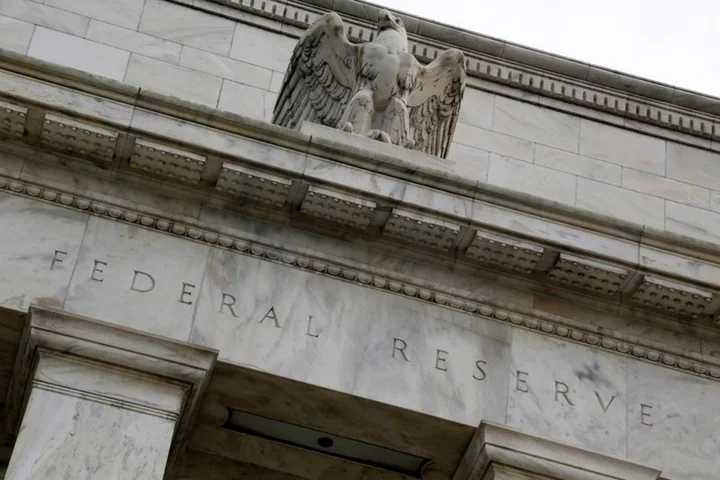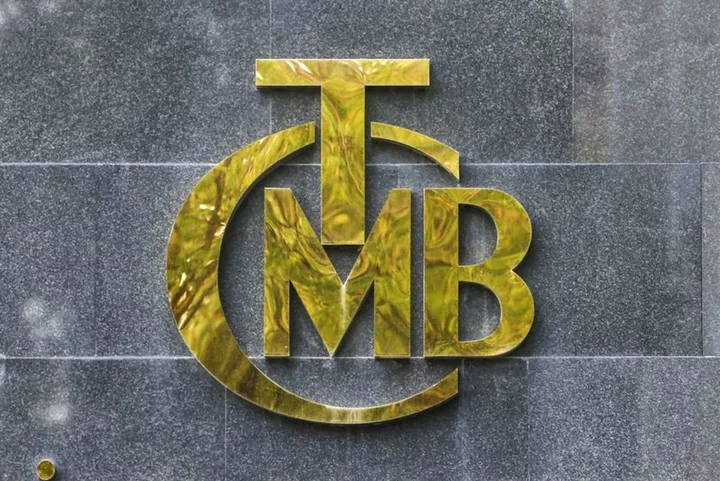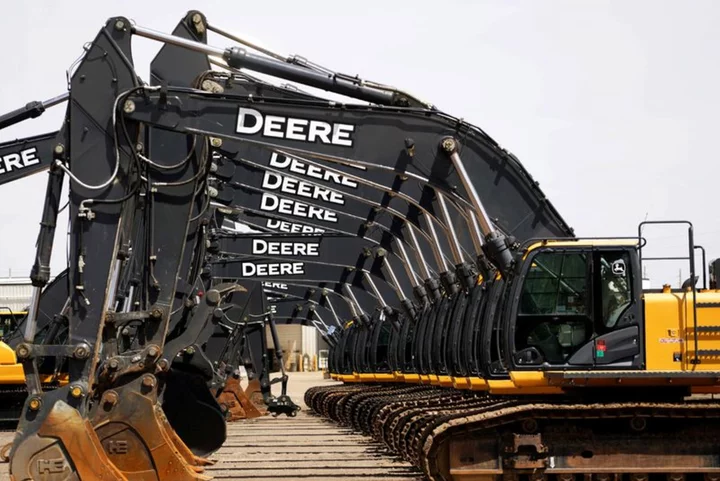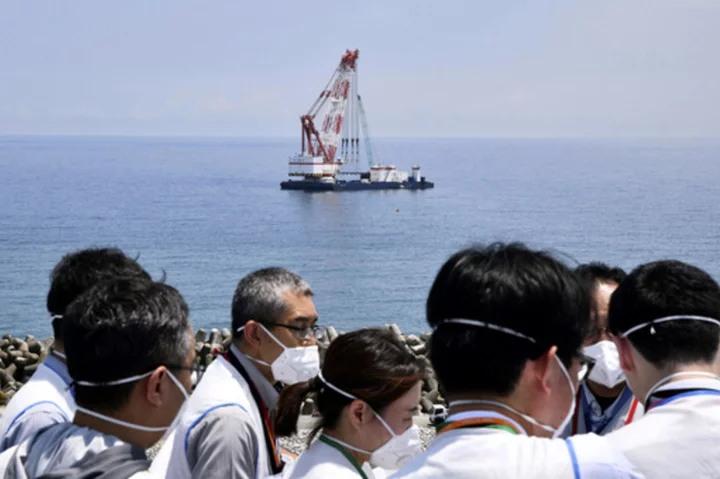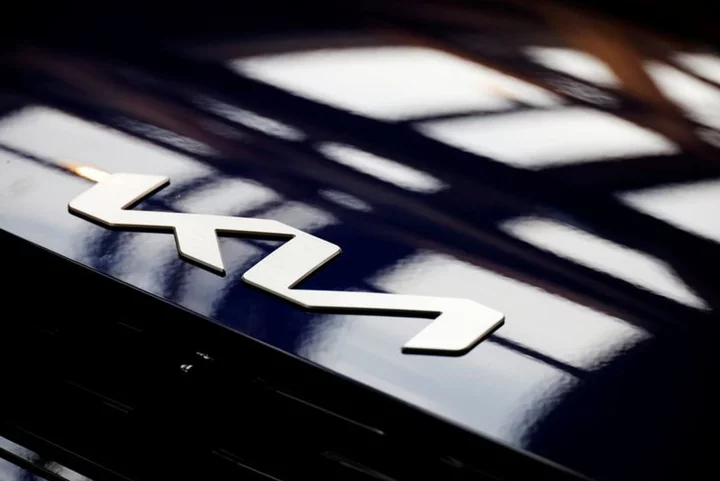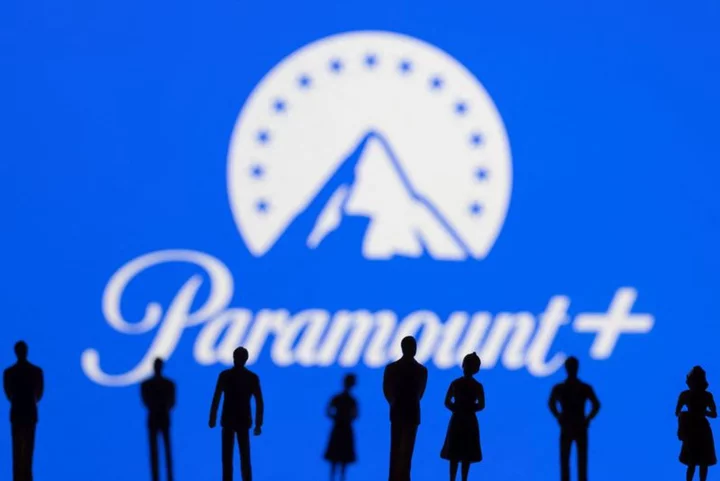By Howard Schneider
DANVILLE, Virginia The new Caesars casino in Danville, Virginia, is a temporary facility reminiscent of an airplane hangar and with limited food and drink options.
It still saw 400,000 visitors lay out more than $50 million in bets since opening in the middle of May, beating its owners' expectations in another example of U.S. consumer spending that so far refuses to cave in the face of the Federal Reserve's aggressive interest rate hikes.
"It's amazing the amount of demand we've seen so far for sure," said Chris Albrecht, senior vice president and general manager of Caesars Virginia, noting the current space's "very limited offering" compared to what's planned for the rest of the site that's being developed in the town of about 40,000 people, where tobacco and textiles were once the economic mainstays.
As Fed officials analyze inflation dynamics in the post-pandemic world and look for signs that tighter monetary policy is having the intended effect of slowing the economy, Danville illustrates the confounding puzzle playing out across the U.S.
Despite higher borrowing costs and national chatter about a looming recession, Danville residents are buzzing not just about the arrival of Caesars, which is putting a casino, conference center and hotel at the site of an old textile mill power plant with plans to hire 1,000 people, but also about a steady flow of manufacturing investment and other job growth in the pipeline.
The Fed, which has raised interest rates by 5.25 percentage points since early 2022, has been looking for the U.S. labor market and consumer demand to ebb, something it feels needs to happen for inflation to fall to its targeted 2% level and which will be particularly important across the service businesses that soak up the bulk of consumer spending.
The consumer keeps fighting back, however, evident in the ticket sales of summer blockbuster movies and concerts, the record single-day U.S. air travel number hit in late June, and monthly spending totals that won't break.
Even as inflation has slowed from last summer's 40-year highs, Fed officials have been reluctant to declare their job finished until there are clearer signs the economy is slowing.
FINDING NEUTRAL
Richmond Fed President Thomas Barkin, recounting recent visits to cities and smaller towns across a U.S. central bank district spanning five mid-Atlantic states, said business executives and officials told a similar story.
"Demand remains resilient. There are debates about how much of that is sustainable or not," Barkin said in an interview with Reuters earlier this week, noting that he puts a lot of stock in consumer sentiment being up.
As economists debate how much cash remains from the savings bulge triggered by the coronavirus pandemic, the underlying momentum for spending may be shifting from "revenge" purchases to something driven by the low 3.5% unemployment rate, wage gains that have of late been outpacing inflation, and rising equity prices holding up higher-income consumers.
Policymakers gathering this week in Jackson Hole, Wyoming, for an annual Fed conference will aim to unravel how the U.S. and world economies may be changing in the wake of the pandemic and emerging global trends.
At least some of the focus will be on what is needed to finish the job of curbing inflation, given the economy's unexpected strength, with economists already debating whether the U.S. central bank has underestimated fundamental parameters like the "neutral" rates of interest and unemployment.
If, as some argue, the interest rate that neither stimulates nor restrains the economy has shifted higher, it means Fed policy is putting less pressure on the economy than expected. That implies more rate hikes will be needed.
By contrast, if the unemployment rate that neither fans nor cools inflation has fallen, it means the economy can accommodate a tighter job market without generating inflation.
Accurately disentangling what's happening will influence whether the Fed makes a policy error on either side of its dual mandate: Leaving interest rates too low and allowing inflation to rekindle, or raising them to unnecessarily high levels and foiling a job market that is arguably more reminiscent of that of the 1960s, with its strong worker leverage and large wage gains.
TWO-SIDED RISK
Fed strategy at this point revolves around reaching a point where officials feel policy is adequately "restrictive" to lower inflation over a potentially extended period of time, rather than raise it ever higher in hopes of forcing a faster drop.
"The big question is whether inflation progress stalls or slows," with underlying prices still rising at an elevated pace, former Chicago Fed President Charles Evans said.
"What's the mistake they are most willing to make? ... They are getting close to two-sided risk. Do they really have to get to 2% in any time frame as long as they are confident ... What if they wind up at 2.3%? They are in the neighborhood. I don't think that has been fleshed out."
Partly to let its policies play out, the Fed is widely expected to leave interest rates on hold at its Sept. 19-20 meeting.
Yet officials will also issue updated economic projections that will have to resolve how the slowdown of inflation squares with stronger-than-expected economic performance. Will the bulk of policymakers feel higher rates will be needed to finish the job? How much of a growth slowdown and rise in unemployment do they think will be needed to complete the job?
As of June, when Fed policymakers last provided economic and interest rate projections, the median forecast saw one more quarter-of-a-percentage-point hike, with cuts beginning next year as inflation slows gradually back to target through 2025.
There are alternate explanations for what is happening. An improving supply side, for example, could produce more goods and services and allow inflation to keep falling even with strong demand, a process Fed officials would not want to interrupt and which would argue for more caution in these late stages of the inflation fight.
Ultimately, demand will need to come off the boil, said Richard Clarida, a former Fed vice chair who is now the global economic advisor for investment firm Pimco.
"The folks in the 'soft-landing' camp have not articulated what is going to deliver 2% inflation in the absence of some softening of the labor market," said Clarida, referring to those who believe inflation will fall without triggering a significant rise in unemployment or a recession. "Is it higher productivity? Workers asking for smaller raises?"
"I am open to the idea that we are in a brave new world ... But everyone can't get a 10% wage increase if the Fed wants 2% (inflation)," he said, noting the large increases won by U.S. unions in recent labor negotiations. "I do expect some rise in unemployment will be required to get underlying inflation into a zone where the Fed is comfortable."
(Reporting by Howard Schneider; Editing by Dan Burns and Paul Simao)

